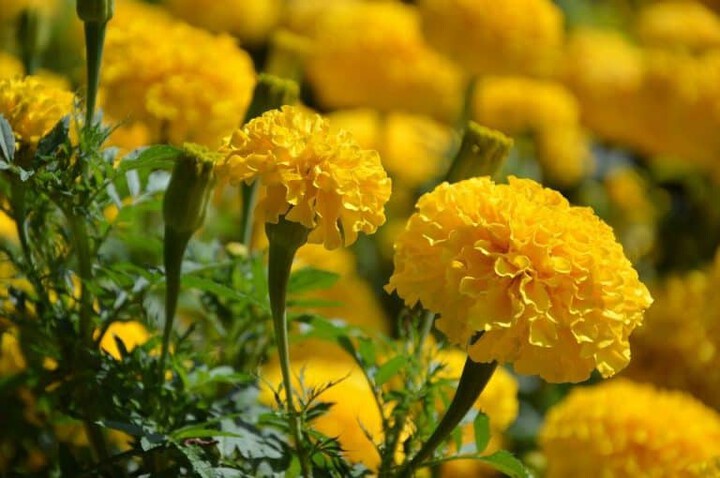
The Aztecs were the first to grow marigolds—but they didn’t just grow them for their beauty and religious connections. They grew these beautiful flowers for medicinal reasons. The De La Cruz – Badiano Aztec Herbal of 1552 describes the use of these plants by the Aztecs in the treatment for hiccups, being struck by lightning, or for safe passage across rivers.
Though these uses seem elementary today, marigolds aren’t without healing properties. The flowers contain antiseptic and antibacterial properties that are effective for wound healing and easing pain caused by injuries like bee stings.
You can also turn the flowers into a poultice for burns or skin infections. When used as a cold eyewash infusion, these plants have also proven to be helpful in treating conjunctivitis. There is some belief that marigolds can also help with circulation disorders, such as varicose veins, and also for children’s scrofula and tuberculosis of the lymphatic system.
DIFFERENT TYPES OF MARIGOLD FLOWERS
While there are hundreds of varieties of these colorful plants, there are only four different types. These include:
·African marigolds: A tall variety.
·French marigolds: A dwarf variety.
·Triploid marigolds: The African and French hybrids; typically multicolored.
·Single marigolds: Long stems; typically resemble daisies.
Some of the most popular varieties of marigolds include:
·Tagetes Cottage Red: A deep red flower with five petals, a golden center, and yellow edges.
·Baileya Multiradiata: A bright yellow flower with a wide yellow center.
·Park’s Whopper Yellow Marigold: A double blooming yellow flower with a sturdy stem. These feature short quills and rounded petals.
·Tagetes Erecta Sweet Cream: A creamy white flower that stands 16 inches tall and 3 inches wide on a sturdy stem.
·Tagetes Patula Aurora Light Yellow: A crimson and gold flower with deeply divided foliage.